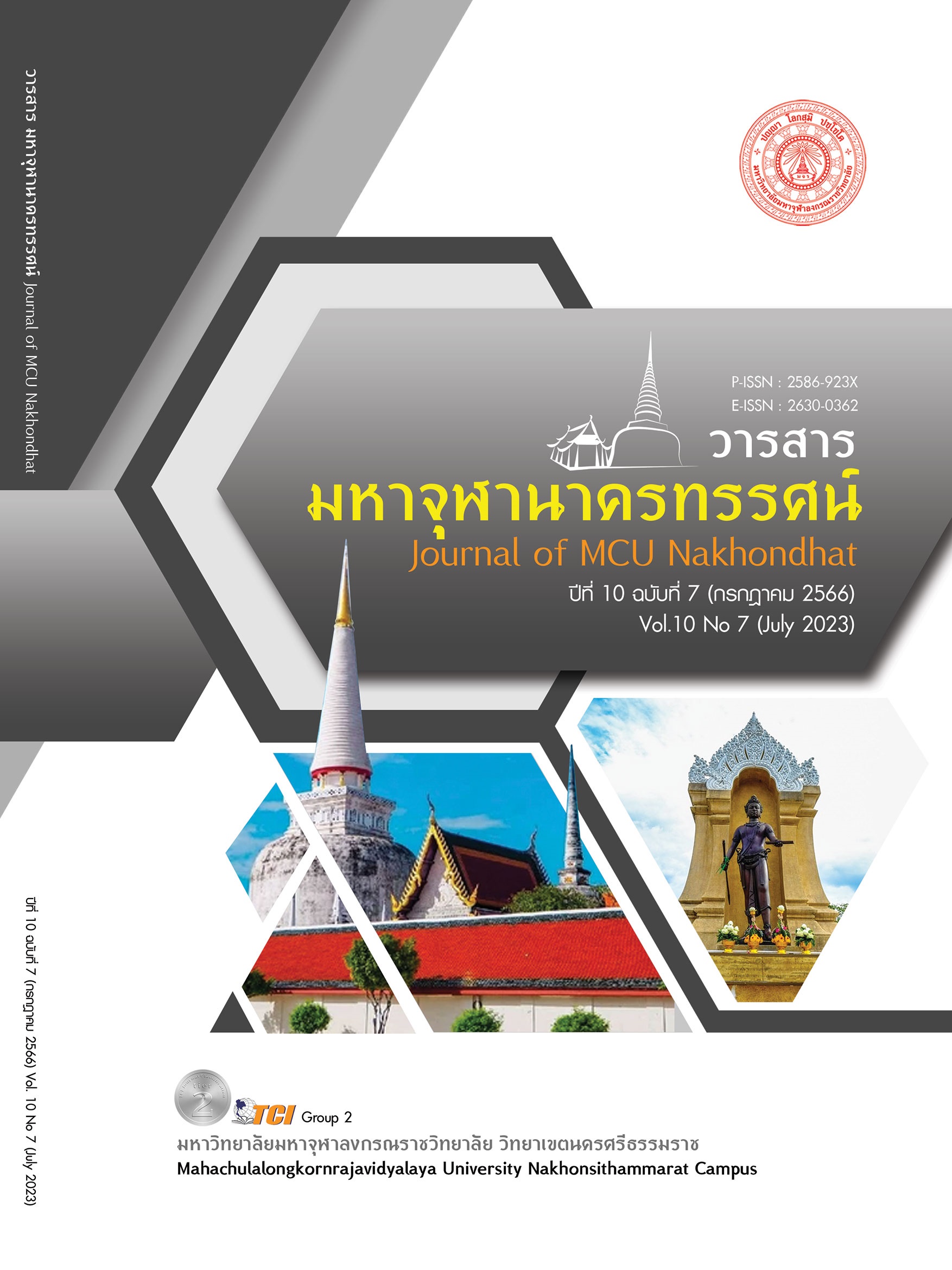UNDERSTANDING MELATONIN : HEALTH BENEFITS AND EFFECTS
Main Article Content
Abstract
The purpose of this article is to examine
the efficacy of melatonin in the treatment or resolution of insomnia. By using the method of reviewing literature from national and international academic databases. The results of the literature review showed that melatonin is a hormone involved in the regulation of sleep-in humans. Oral melatonin has proven effective in the treatment of insomnia and the improvement of sleep efficiency in children and adolescents, young adults and the elderly. To date, no serious adverse effects linked to melatonin use have been reported. Most research has found that melatonin appears to be harmless if taken for short periods of time or intermittently. However, one of the limitations of melatonin research is the lack of monitoring and evaluation of melatonin intake. So it is not possible to conclude that melatonin is harmless. In foreign countries, melatonin products are distributed in a dietary supplement format. In Thailand, however, melatonin is classed as a medicine. It is regulated by the Drugs Act and other drug-related statutes. This should only be prescribed by a physician within a medical setting. Hence, taking melatonin to treat insomnia Consequently, it should be under the close supervision of a physician. And should not purchase melatonin products to eat on their own because there can be adverse effects on the body. In addition, relevant organizations should accelerate public education and awareness of melatonin limits because there are so many melatonin supplements sold online.
Article Details

This work is licensed under a Creative Commons Attribution-NonCommercial-NoDerivatives 4.0 International License.
References
เชาวลิต มณฑล. (2555). ประสิทธิภาพและความปลอดภัยของยาเม็ดเมลาโทนินชนิดออกฤทธิ์ยาวต่อการรักษาอาการนอนไม่หลับ. ไทยไภษัชยนิพนธ์, 7(1), 1-17.
กัญญ์สิริ อภินันทนกูล. (2563). เมลาโทนิน (melatonin) ตัวช่วยนอนหลับยอดฮิต. เรียกใช้เมื่อ 9 มกราคม 2566 จาก https://pharmacy.mahidol.ac.th/th/knowledge/article/520/เมลาโทนิน/
สมพงษ์ จิตระดับ. (2557). เด็กไทยวัยกิ๊ก. กรุงเทพมหานคร: สถาบันวิถีทรรศน์.
สำนักงานคณะกรรมการอาหารและยา. (2563). ผลิตภัณฑ์เสริมอาหารผสม “เมลาโทนิน” ผิดกฎหมาย อย. เตือน ใช้ระยะยาวเสี่ยงอันตราย. เรียกใช้เมื่อ 19 มกราคม 2566 จาก https://oryor.com/media/newsUpdate/media_news/1895
Ailshire, J. A. & Burgard, S. A. (2012). Family relationships and troubled sleep among U.S. adults: examining the influences of contact frequency and relationship quality. J Health Soc Behav, 53(2), 248-262.
Besag, F. M. C. et al. (2019). Adverse Events Associated with Melatonin for the Treatment of Primary or Secondary Sleep Disorders: A Systematic Review. CNS Drugs, 33(12), 1167-1186.
Borrás, S. et al. (2021). Medicinal Plants for Insomnia Related to Anxiety: An Updated Review. Planta Med, 87(10-11), 738-753.
Cummings, C. (2012). Melatonin for the management of sleep disorders in children and adolescents. Paediatr Child Health, 17(6), 331-336.
Daley, M. et al. (2009). The economic burden of insomnia: direct and indirect costs for individuals with insomnia syndrome, insomnia symptoms, and good sleepers. Sleep, 32(1), 55-64.
Ferracioli-Oda, E. et al. (2013). Meta-analysis: melatonin for the treatment of primary sleep disorders. PLoS One, 8(5), 1-6.
Fitzgerald, T. & Vietri, J. (2015). Residual Effects of Sleep Medications Are Commonly Reported and Associated with Impaired Patient-Reported Outcomes among Insomnia Patients in the United States. Sleep Disorders, 2015(607148), 1-9.
Gaudreau, H. et al. (2001). Age-related modifications of NREM sleep EEG: from childhood to middle age. J Sleep Res, 10(3), 165-172.
Geoffroy, P. A. et al. (2019). The use of melatonin in adult psychiatric disorders: Expert recommendations by the French institute of medical research on sleep (SFRMS). Encephale, 45(5), 413-423.
George, N. M., & Davis, J. E. (2013). Assessing sleep in adolescents through a better understanding of sleep physiology. The American journal of nursing, 113(6), 26-32.
Goldman, R. D. et al. (2021). Myths and Evidence Regarding Melatonin Supplementation for Occasional Sleeplessness in the Pediatric Population. Pediatr Ann, 50(9), e391-e395.
Grigg-Damberger, M. M., & Ianakieva, D. . (2017). Poor Quality Control of Over-the-Counter Melatonin: What They Say Is Often Not What You Get. J Clin Sleep Med, 13(2), 163-165.
Icahn School of Medicine at Mount Sinai. (2022). Melatonin. Retrieved January 10, 2023, from https://www.mountsinai.org/health-library/supplement/melatonin
National Center for Health Statistics. (2019). QuickStats: Percentage of Adults Aged ≥18 Years Who Took Medication To Help Fall or Stay Asleep Four or More Times in the Past Week, by Sex and Age Group U. S., 2017-2018. MMWR. Morbidity and mortality weekly report, 68(49), 1150-1153.
Patel, A. K. et al. (2022). Physiology, Sleep Stages. In StatPearls. Treasure Island (FL): StatPearls Publishing.
Slominski, A. T. et al. (2018). Melatonin: A Cutaneous Perspective on its Production, Metabolism, and Functions. J Invest Dermatol, 138(3), 490-499.
Talib, W. H. et al. (2021). Melatonin in Cancer Treatment: Current Knowledge and Future Opportunities. Molecules, 26(9), 1-46.
The National Center for Complementary and Integrative Health. (2022). The National Center for Complementary and Integrative Health. Melatonin: What You Need To Know. Retrieved January 10, 2023, from https://www.nccih.nih.gov/health/melatonin-what-you-need-to-know


